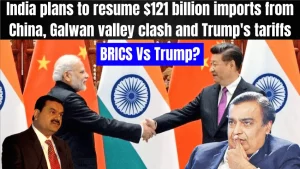616 Views
India plans to resume $121 billion imports from China, Galwan valley clash and Trump’s tariffs
India resume imports from china to ditch Trump’s Tarrifs, Make in India failed, Galwan Valley Clash, BRICS trade, Adani buying Chinese Goods in 2025.
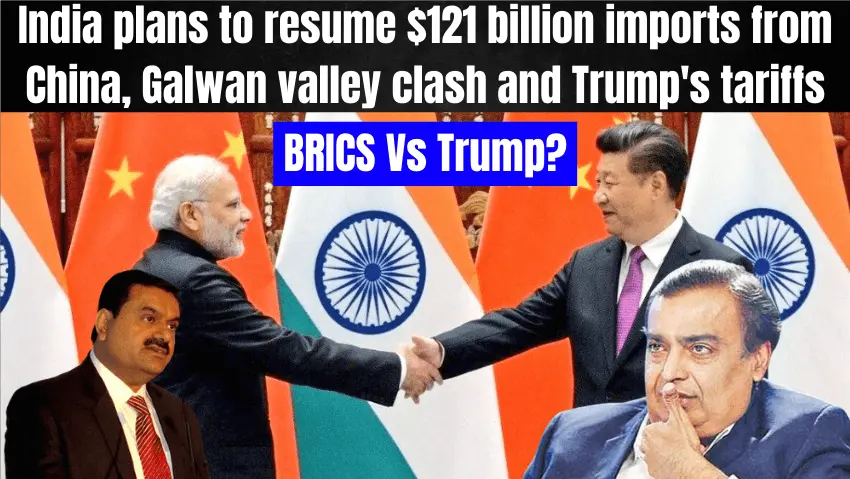
Recently, India is reportedly relaxing trade and investment restrictions imposed on China after the 2020 Galwan Valley clash. Recently, the Indian Prime Minister and the Chinese delegation have re-established their relations regarding China-India trade, and it has been said that in the future, India will import goods worth approximately $118 billion USD from China. But recently, due to the increasing role of Indian and Chinese in BRICS, it is being said that China can provide the biggest support to India right now to save itself from US and European tariffs in the future. Recently, Indian billionaries and Indian Government imports Chinese goods, electronics, machinery, organic chemicals, plastics, iron and steel, and medical instruments which is more cheaper than US and other western countries. India’s imports from China highlight structural gaps in its manufacturing ecosystem. While the government aims for self-reliance (Atmanirbhar Bharat), immediate dependencies persist, especially in critical sectors like electronics, pharmaceuticals, and green energy. Balancing economic pragmatism with strategic decoupling remains a long-term challenge.
Why is India planning to resume import, so why the change and ditch Trump’s tariff plans
India’s plan to resume $121 billion in imports from China can be attributed to a combination of economic, strategic, and practical factors, despite ongoing geopolitical tensions. China is a major manufacturing hub, and many products, especially electronics, pharmaceuticals, and machinery, might be cheaper or more readily available from China. Even if there’s a push for self-reliance (like the “Make in India” initiative), building up domestic industries takes time. So maybe Indian businesses still rely on Chinese imports for raw materials or components. Chinese goods are often more affordable, so Indian consumers might prefer them, especially in sectors like electronics (smartphones, appliances) where Chinese companies dominate. Restricting imports could lead to higher prices or shortages, which the government might want to avoid, especially if inflation is a concern. It has recently been told that India imports almost 80% of its goods from China, which includes Pharmaceuticals, Renewable Energy, Semiconductors, Global Supply Chain Integration, Electronic Parts, AI chipsets, Telecom Equipment, Machinery, Chemicals, and Cheap consumer products.
Why is Indian ‘Make in India’ incomplete without Chinese Imports?
It has recently been told that even though the Indian Government has launched ‘Make in India‘, the electronic, medical and machinery goods of Indian top billionaires and Indian top companies are still coming from China, where the same Chinese products are being sold in India at expensive prices by labelling them ‘Make in India’. On the other hand, the Indian governement may praise tariffs on Chinese goods as much as it wants but still Indians are getting Chinese goods at much cheaper rates. Indian manufacturing sectors, such as electronics, pharmaceuticals, and machinery, rely heavily on Chinese raw materials, components, and capital goods. Disruptions could stall production, affecting both domestic supply and export capabilities. India’s decision reflects pragmatic economic priorities over immediate geopolitical friction. While striving for long-term self-reliance, the resumption underscores the intertwined nature of global trade and the challenges of rapid decoupling. This move aims to stabilize industries, control inflation, and maintain growth, even as India gradually diversifies its supply chains and enhances domestic production.

Saudi Arabia allegedly mentioned in the Epstein files along with American, Jamal khashoggi case
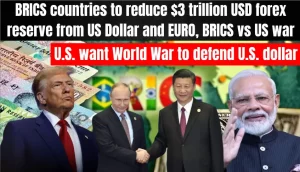
BRICS countries to reduce $3 trillion USD forex reserve from US Dollar and EURO, BRICS vs US war

Trump plans to lift sanctions on Russia to import Russian oil by aiding the Ukraine war

North Korea to purchase the Bavar-373 air defence system against US presence in East Asia
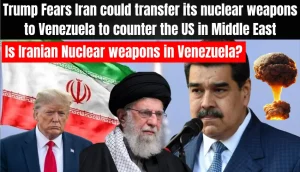
Trump Fears Iran could transfer its nuclear weapons to Venezuela to counter the US in Middle East
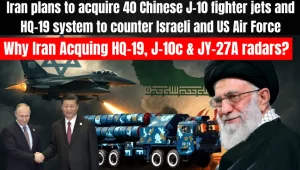
Iran plans to acquire 40 Chinese J-10 fighter jets and HQ-19 system to counter Israeli and US Air Force
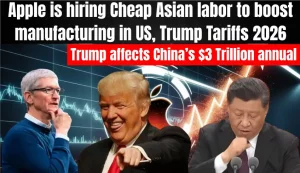
Apple is hiring Cheap Asian labor to boost manufacturing in US, Trump Tariffs 2026

How Iran shoots down Israeli F-35 fighter jets using its Domestic air defense system?

Israeli Iron Dome, MIM-104 Patriot and Arrow 3 failed to intercept Yemeni Burkan-2H missiles

NATO plans to steal Ukrainian Mineral Worth $18 Trillion in Exchange of debt to Zelensky

BRICS countries to reduce $3 trillion USD forex reserve from US Dollar and EURO, BRICS vs US war

Trump plans to lift sanctions on Russia to import Russian oil by aiding the Ukraine war

Dragon Pass, BlackRock and Qatar acquire Adani group amid India Pakistan tension
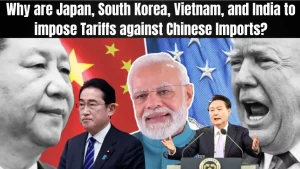
Why are Japan, South Korea, Vietnam, and India to impose Tariffs against Chinese Imports?
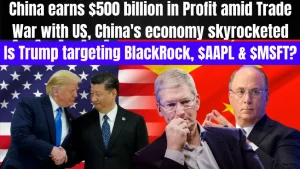
China earns $500 billion in Profit amid Trade War with US, China’s economy skyrocketed
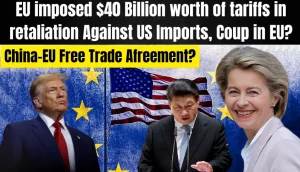
EU imposed $40 Billion worth of tariffs in retaliation Against US Imports, Coup in EU?
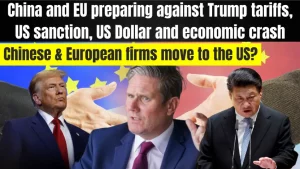
China and EU preparing against Trump Tarrifs, US sanction, US Dollar and economic crash
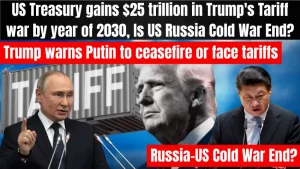
US Treasury gains $25 trillion in Trump’s Tariff war by year of 2030, Is US Russia Cold War End?
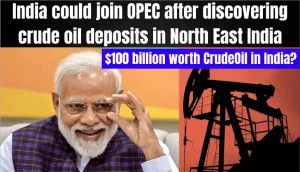
India could join OPEC after discovered crude oil deposits in North East India
